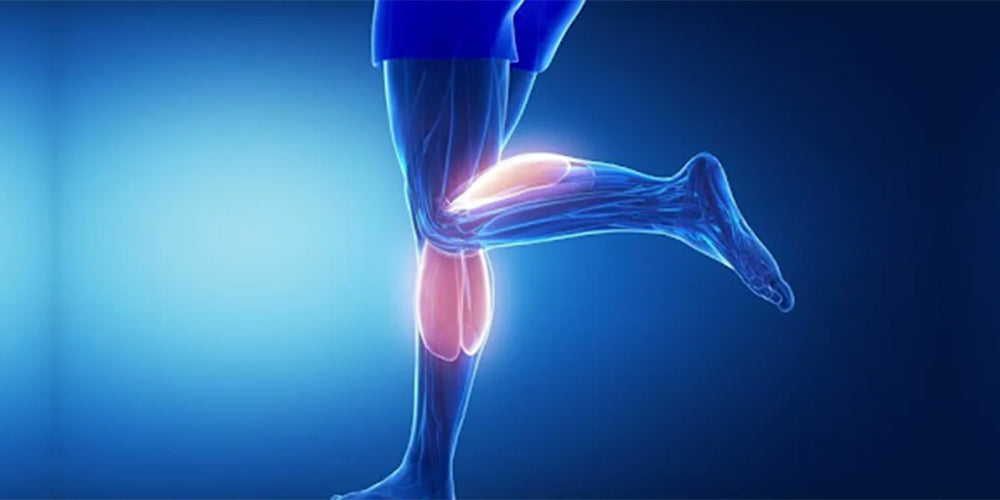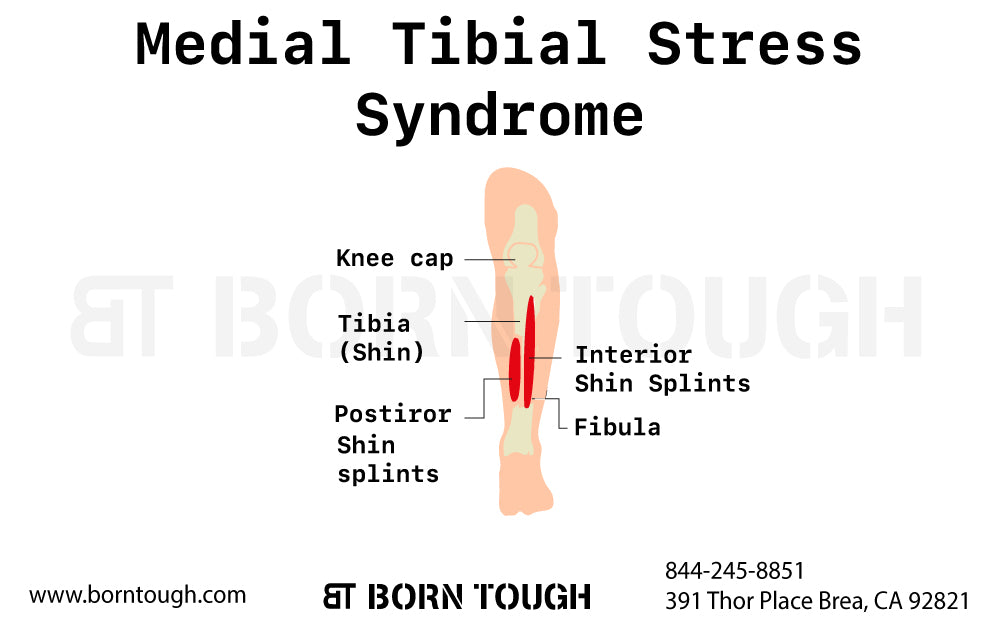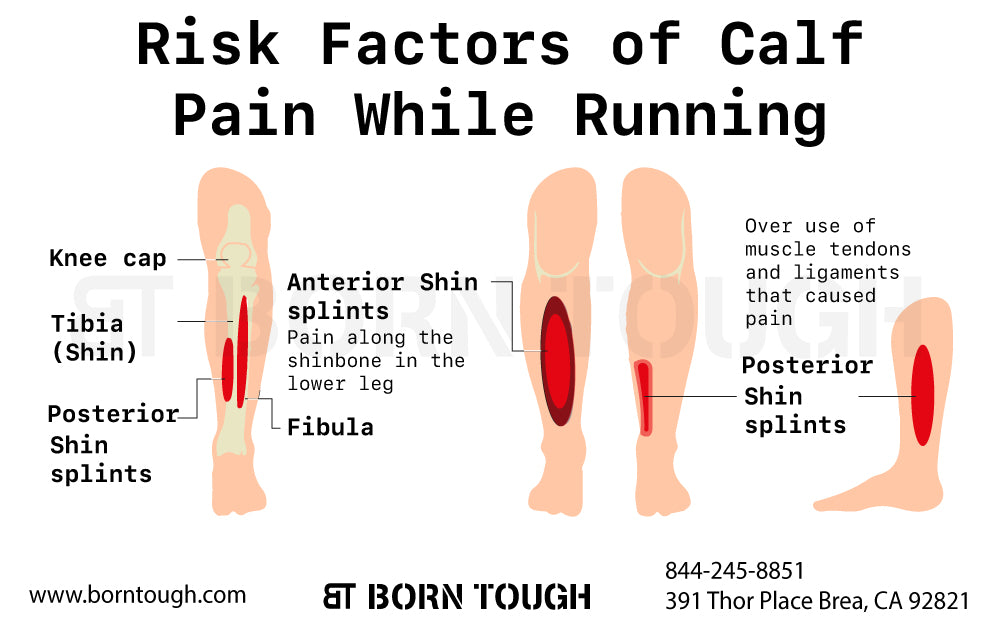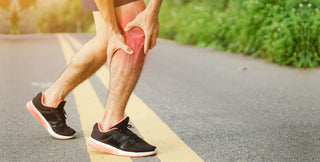Table of Contents
- 1. Types of Calf Pain While Running
- 2. Pain When Running Is Non-Traumatic
- 3. Causes of Pain While Running
- 3.1. Change in the Running Form
- 3.2. Dehydration
- 3.3. Dormant Hip Muscles
- 3.4. Stress and Muscle Fatigue
- 3.5. How to Analyse Muscle Strength?
- 3.6. Treating Muscle Fatigue for Painless Running
- 3.7. Mild Sciatica
- 3.8. How Does Running Cause Sciatica?
- 3.9. Is Piriformis a Calf Muscle?
- 3.10. Treating Sciatica – Strategies to Continue Running
- 3.11. Shin Splints – Medial Tibial Stress
- 3.12. Risk Factors of Calf Pain While Running
- 3.13. Treating Shin Splints
- 3.14. Chronic Exertional Compartment Syndrome (CECS)
- 3.15. Signs & Symptoms
- 3.16. Treating CECS – Is It Possible to Run Again?
- 4. A Gist of Calf Pain While Running
Runners often complain about calf pain and soreness. And by runners, this article is not referring to Olympics athletes. Running is a part of many fitness lovers’ exercise routines. Running is also a form of recreation for many. The fun is taken out of this activity due to common but impeding calf pain.
Usually, calf pain is associated with some kind of injury. However, it is possible to feel a throbbing pain in the calf with no previous injury, trauma, or damage to the calf. To rectify the problem, it is important to identify the source of the problem.
The pattern for most people complaining about calf pain is that it begins after they start running, and continues to get worse as they keep going, till the pain becomes too unbearable and forces them to stop.
After they stop, pain lessens considerably and runners feel minimal to no pain when they take a break. This non-traumatic pain can be extremely frustrating because detecting the cause is very difficult. Unless you find out what’s causing the pain, there is no way to mitigate it.
1. Types of Calf Pain While Running

The number of different types of calf pain is almost staggering. There is a strong connection between runners and calf pain due to the form and function of calf muscles.
Calf muscles act as shock absorbers as your feet come in contact with the ground and also provide the kinetic force necessary to push forward as you run.
2. Pain When Running Is Non-Traumatic

Traumatic pain refers to feeling hurt after being hit by something hard, having an accident, or a body part receiving a traumatic blow. Runners seldom report pain due to external injuries. Rather, they suffer pain from internal tears. This type of pain is called non-traumatic calf pain and includes the following types:
2.1. Chronic
This is recurring pain that starts as you begin running, which worsens as you keep pushing yourself. It tends to lessen or disappear when you stop. This pain can cause a lot of frustration because it prevents you from training properly. This type of pain, when bearable, indicates chronic, low-level strain in the muscles. Unbearable chronic pain can be indicative of a serious disorder called chronic exertional compartment syndrome, discussed infra.
2.2. Dull Ache
Muscle strains that occur due to prolonged, repeated exposure to stress require a longer time to heal. This type of pain occurs when runners don’t allow their muscles proper time to recover. As they begin warming up before running, dull aches can surface and running can intensify the pain.
Not paying attention to your body’s needs leads to damage such as torn tissues and soreness.
2.3. Sharp, Sudden, Needle-like Pain
Sharp, sudden pain can make runners stop with a gasp. This piercing feeling occurs for runners who tend to increase their speed abruptly. Since their muscles are not ready to meet the demand of the workout, they suffer major tears.
Tactile and visible symptoms include discoloration, swelling, bruise, and a tingly warmth.
3. Causes of Pain While Running
The most common non-traumatic causes of pain during running are:
3.1. Change in the Running Form
Calf muscles can become sore or painful due to running incorrectly. Make a video while running to analyze your form and style; consult a trainer to help you improve them. Over-striding or slouching may seem like minor mistakes but they can have grave consequences.
3.2. Dehydration

Human muscles consist of approximately 75% water. Staying hydrated is extremely important for your muscles to function properly. Calf muscle pain can be a result of dehydration. Mild dehydration can lead to tightness and severe dehydration can result in cramps or spasms.
According to Medical News Today - medically reviewed by Gregory Minnis DPT - muscles tend to build to produce lactic acid during and after vigorous activity. Water plays an important role to flush out the built-up lactic acid in our muscles. Drinking enough water is of utmost importance for muscle health.
3.3. Dormant Hip Muscles

Running works different muscle groups at once. Sometimes, one group of muscles (hip muscles) remains inactive, which puts more strain on the calves. This is a major reason for soreness after running. It is difficult to identify which muscles lie dormant and which ones are compensating for them by overworking. But chronic soreness in calf muscles is related to weak hip muscles.
3.4. Stress and Muscle Fatigue

In this case, you are bound to wonder, why are your muscles fatigued? The potential answer to this question could be either:
- Lack of strength - Running long distances can be taxing on weak muscles. It is important to only subject your muscles to a level of work that they can easily endure. When you try to stretch that limit too far, the inevitable result is pain.
- Overloading – Similarly, working for too long can wear out the strongest of muscles. If you overload your muscles with sudden variations in your routine, like running uphill, barefoot, or running an extra mile without preparing your muscles, they can become overloaded, sore, and painful.
3.5. How to Analyse Muscle Strength?
Perform a basic standing calf raise. Place your hands on the wall or the back of a chair for support. Now lift yourself on your toes and hold that position for some time.
Though the number of reps is subject to change, performing three sets of 30 reps (with 1-minute rest) without difficulty indicates growth in muscle strength. Anything below 30 reps indicates weak muscles.
Again, this information is theoretical with no research to support it, yet.
3.6. Treating Muscle Fatigue for Painless Running
Resting and performing dynamic stretching, including basic squats and lunges, greatly increases the flexibility and strength of your calf muscles. The key here is to be gentle on your muscles. Let them develop properly before you put them to work.
3.7. Mild Sciatica

Any calf pain you experience may be due to sciatica.
The longest nerve in the human body – the sciatic nerve – is vulnerable to compression and damage, which can result in a condition called sciatica. Sciatic pain, in turn, can cause calf pain due to various reasons. One of the causes is overuse in endurance sports, such as running.
3.8. How Does Running Cause Sciatica?
Runners are prone to sciatica and the primary reason for tightness in the Piriformis muscle. New runners develop sciatica because their piriformis muscles are not strong enough to handle the activity. On the flip side, if you’ve been running regularly for years or are a professional athlete, overuse or muscle fatigue is the cause.
3.9. Is Piriformis a Calf Muscle?

The Piriformis muscle is located at the buttocks, but because the sciatic nerve travels down to your ankles and the tibial nerve, a branch of the sciatic nerve innervates the calf muscles, the pain engulfs your calves, too.
3.10. Treating Sciatica – Strategies to Continue Running
Most people recover from mild sciatica within six weeks if they rest and take proper medication. If you do not want to wait for six weeks, then you can continue running with mild sciatica. You may still feel calf pain while running but these precautionary steps will help alleviate the pain.
- Follow a warm-up routine before running and a cool-down stretching routine after running. The warm-up is a preparation strategy. Stretching can help your muscles cool down and relax.
- Incorporate hip flexor stretches because sciatica is usually associated with tight hip flexors.
- Combine the use of ice and heat to treat the pain. Warm baths and showers are a great way to relax tight muscles. Applying ice directly to the affected region will help alleviate sciatic pain.
- Non-steroid anti-inflammatory drugs (NSAIDs) such as ibuprofen and naproxen can help with the pain.
- You can visit a doctor to get a prescription for a stronger muscle relaxant.
- Massage, yoga, and gentle foam rolling are said to be great for the pain.
If none of these remedies relieve the pain, you must stop running immediately and discuss your condition with a clinical practitioner.
3.11. Shin Splints – Medial Tibial Stress

The calf muscles attach at the back of the shin bone. This is the site where pain, soreness, and tenderness are felt by most runners. Pain can be accompanied by swelling, too. Shin splints are caused when connective tissues that attach your calf muscles to the shinbone are impaired by repetitive stress.
Initially, pain is restricted to running only, but later discomfort can be felt when walking and at rest.
3.12. Risk Factors of Calf Pain While Running

- All beginners who have just started running.
- The abrupt increase of running duration or distance.
- Running on varying tracks, hilly, rocky, hard paths.
- Having flat feet also contributes to shin splints.
- Running with increased intensity without breaks.
3.13. Treating Shin Splints
- Rest but don’t give up all activities. During the healing process, you can continue with low-impact exercise.
- Over-the-counter (OTC) medication may help with the pain.
- Use ice packs three to four times a day. Keep this up for several days. Ice packs should be applied for up to 20 minutes straight every time.
- If the pain worsens, seek immediate medical attention.
3.14. Chronic Exertional Compartment Syndrome (CECS)


In a study published in PubMed Central (PMC) archive at the U.S National Institutes of Health’s National Library of Medicine (NIH/NLM) - this chronic condition is also called Soleus Syndrome and is an exercise-induced, muscle and nerve condition that is common amongst runners.
The lower limbs have specific areas of muscles called compartments. In the superficial compartment of the leg, the distal end of the sural nerve, the gastrocnemius and soleus muscles of the calf are present. When this compartment suffers increased pressure, weakness and pain can occur.
“Chronic exertional compartment syndrome occurs in runners and any athlete who has to sustain running. The impact causes the four compartments in the leg to become overloaded. This results in swelling and nerve compression.”
(Dr. David Smith, MD, University of Kansas Health System)
3.15. Signs & Symptoms

Symptoms may manifest as follows:
- Aching or burning in the posterior compartment.
- Numbness, tingling
- Tightness
- Foot drop
- Swelling
- Weakness in the affected limb.
A runner suffering from chronic exertional compartment syndrome may observe the following pattern of pain.
- In the beginning, there is no pain.
- The pain appears after some time with an increase in distance or intensity (exertion).
- As you continue running – ignoring the pain – it worsens, causing you to stop.
- After several minutes, the pain will subside on its own.
You may notice that with every passing day, the recovery time increases. For example, where it initially took 15 minutes for the pain to lessen, it might take 30 minutes after a week.
3.16. Treating CECS – Is It Possible to Run Again?


If you can relate to any of the symptoms mentioned above or experience recurring pain while running, you should see your healthcare provider as soon as possible.
The condition is treated through surgical and non-surgical methods. However, after a non-surgical method of treatment, you may have to give up running completely.
The surgical method called fasciotomy is the best treatment option available. There is a fair chance for this surgery being successful, after which you can run to your heart’s content.
4. A Gist of Calf Pain While Running
Calf pain while running is essentially a non-traumatic type of pain. Determining what exactly is this pain will leave you perplexed because there is a myriad of causes. From soreness to strain, calf pain can be dull, achy, sharp, and stabbing. Calf muscle pain, when accompanied with observable details, indicates serious conditions.
You may feel frustrated and impatient to recover, itching to get outdoors and feel the wind in your hair as you run. But it is better to take your time healing, otherwise, you may suffer irreparable harm.
"This article is originally posted on borntough.com, and borntough.com own the sole copyright on this article. If you read this article outside borntough.com, please report this website to the authority because they have stolen the content from borntough.com and violated borntough copyright"
